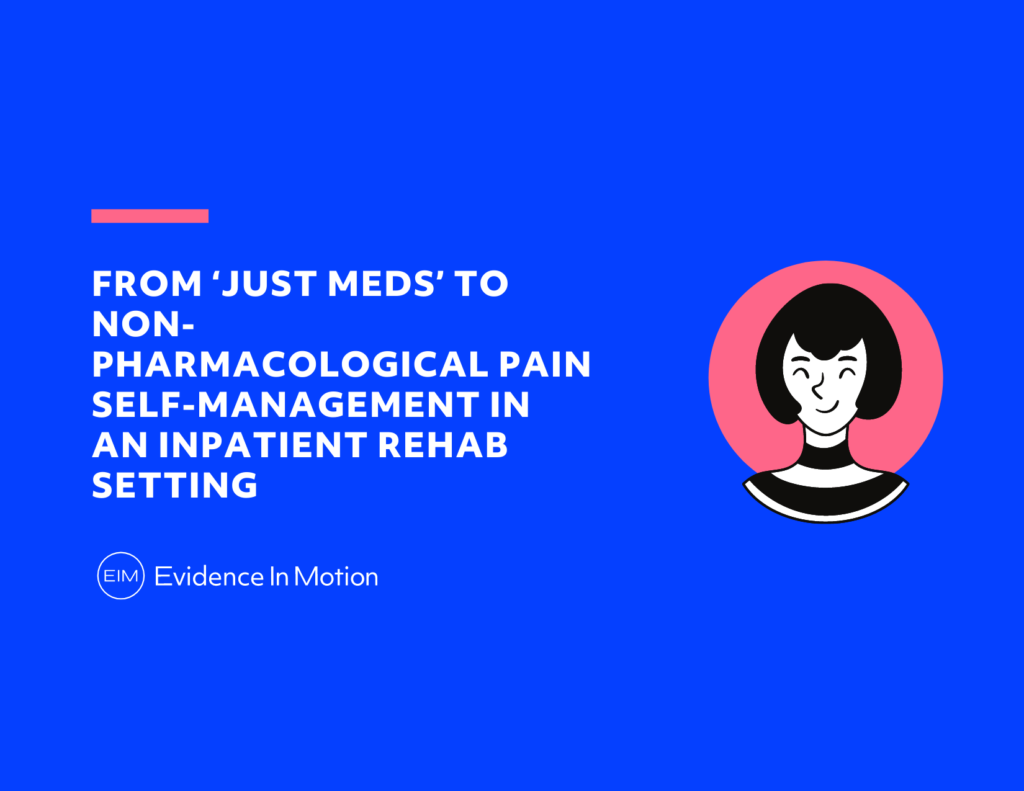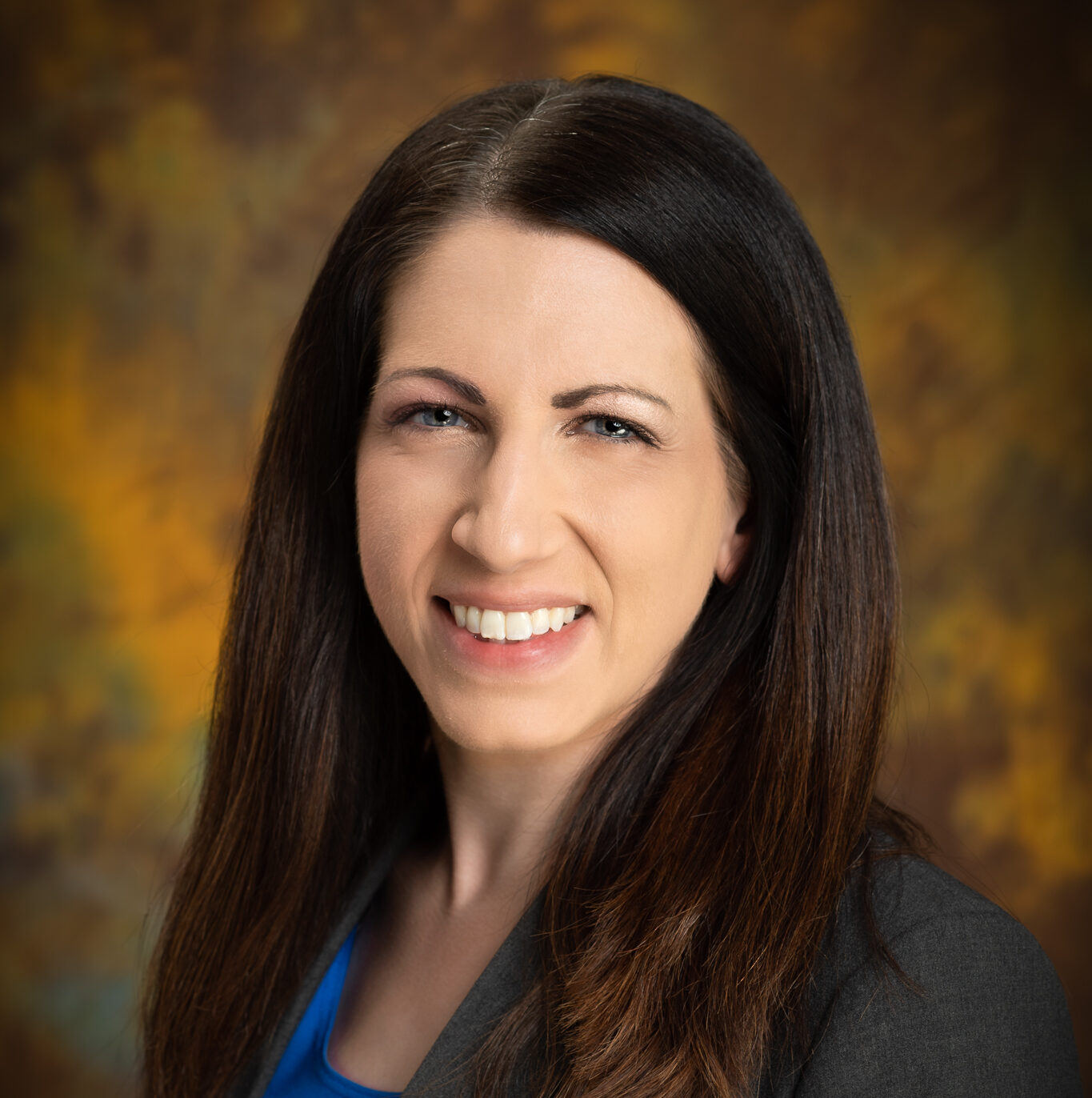
“Let the work speak for itself.” I won’t soon forget those words (some of the best advice I’ve ever received), from my then occupational therapy supervisor when I first started in my current inpatient rehabilitation hospital position. I had just transitioned from working in an outpatient clinic setting, achieving my Therapeutic Pain Specialist (TPS) Certification through EIM in June 2017 and only a few short months later finding myself in rather unfamiliar territory and desperate to continue with my newfound passion of best practice pain treatment.
So, I let “the work speak” indeed, starting by continuing to use all the training I had gained through the TPS when addressing the pain of my patients on a one-on-one basis. Slowly but surely in this multidisciplinary environment, other disciplines began to take notice, especially when our shared patients began to report less pain, improved function, and their newfound knowledge of pain neurophysiology. This is also when I had quite the “Eureka!” moment, realizing that this type of setting was ideal to incorporate pain neuroscience education and non-pharmacological pain interventions, as it would allow a further “upstream” approach to pain care. My fellow therapists felt so too, as I noticed quite the uptick in their inclusion of pain neuroscience education language and increased incorporation of non-pharmacological interventions during their sessions. I also identified an untapped potential in our nursing staff, as they had the most frequent interactions with our patients regarding their pain.
It also turned out to be a “right place at the right time” opportunity, as it was around this time that our inpatient rehabilitation facility formed a committee devoted to addressing the opioid crisis and meeting regulatory pain management standards. Specifically, to reduce opioid use by our patients and increase the use of non-pharmacological pain interventions. I was asked to join the committee and make recommendations, and it was then that the “Alternative Pain Management” program was developed. The program involved the creation of a “Pain Control and Comfort Menu” that detailed all the available non-pharmacological options for patients, encouraging not only more routine modalities such as ice or heat, but also meditation and other forms of relaxation techniques.
Fellowship in Pain Sciences
Interested in the most advanced pain science education for health care providers?
The intent was for both nursing and therapy staff to incorporate the “Menu” into routine patient care, but I advocated for additional training for all nursing staff during their orientation via a thirty-minute presentation on the fundamentals of pain neuroscience education (PNE), the biopsychosocial model of pain, and the importance of creating a compassionate and safe, healing environment for our patients when interacting with them and addressing their pain. I argued to make a change, it simply wasn’t enough to offer alternative pain treatments, but that the staff needed to better understand pain from the biopsychosocial model to explain it and the why behind the interventions to our patients.
A few months into the first iteration of this program, I learned that EIM now had a full Fellowship in Pain Sciences! I jumped at the chance and found myself invigorated and fueled by this heightened learning. I quickly realized that Fellowship was going to spurn me on to be further viewed as a leader of best-practice pain management in my current role, and indeed, the “work continued to speak for itself” as all members of the healthcare team began to look to me to consult and make recommendations for any of our patients having difficulty with pain management.
As rewarding as this was, the same thought kept creeping up in the back of my mind: “it isn’t enough for it to just be ME. I must promote these skills and a pain treatment culture change for everyone!” I was really starting to see the big picture, and the scholarly project of the Fellowship allowed me to fulfill addressing that big picture by returning to the “Alternative Pain Management” program to focus on knowledge translation with our nursing staff. A quick survey and informal discussions with nursing staff led to the majority stating that they felt the training through the program was important, but that the carryover was lacking, both with understanding the latest pain neurophysiology and using the “Menu” routinely to promote all the available non-pharmacological pain interventions. This emphasized training patients in deep breathing, relaxation techniques or recognizing the importance of emotional support and compassion and the impact it has on pain.
I also realized that the paradigm that nurses operate from when treating pain was quite different than the one that I focus on as an occupational therapist. Namely, that nurses feel obligated to do everything in their power to decrease their patient’s pain, whereas I felt obligated to foster self-management with pain treatment strategies with my patients and promote pain self-efficacy, or what they can do “despite the pain”, during participation in their daily activities. This realization led to great discussion, and a renewed focus for the program, fostering a more collaborative team approach between therapy and nursing staff to address our patient’s pain holistically.
My scholarly project became an Exploratory Quality Improvement Study, with goals to not only increase the use of non-pharmacological pain interventions (especially emotion-focused and relaxation based), but also demonstrate improved pain self-efficacy, function, and self-management of pain for our patients. At the start of a six month period, I first established the current usage of the “Pain Control and Comfort Menu”, frequency and types of non-pharmacological pain interventions utilized, and via questionnaires currently rated patient function and impact of pain (including sleep), self-efficacy (e.g. “How much does your pain limit your ability to dress yourself?”), and self-management (e.g. “How confident are you in being able to treat your pain in ways other than pain medications?”). I then focused on re-training the nursing staff, including providing opportunities for training in various relaxation techniques and putting together a “Nursing Pain Kit” that contained ready to print PDF patient handouts of the techniques, and in the final three months, reassessed all established outcomes.
Ultimately, there was an increase (9.34%) in non-pharmacological interventions, especially Emotional/Spiritual Support, and patient reported confidence in use of alternatives to pain medications, function, and pain self-efficacy, with 80.0% of patients shown the “Pain Control and Comfort Menu” by discharge. But even more importantly, I started to observe an increase in routine communication between nursing and therapy staff. For instance, a nursing staff member may have initiated deep breathing with a patient, reached out to the therapy team to carry this over, then a therapist may also add another relaxation technique to aide in improved sleep quality, and the nursing staff member was educated in how to assist that patient to complete it at bedtime! So much growth happened for all the members of our team, and it was a humbling but important experience to step into each other’s respective scopes of practice and learn from one another. The biggest takeaway for me from this experience has been that a pain treatment culture shift in an inpatient healthcare environment IS possible, and that by stepping into a leadership role that facilitates an interdisciplinary approach, I am doing my part to move forward knowledge translation and best practice for the improved quality of life for our patients and the professional growth of our treatment team!
Enjoy this topic? Join us for an upcoming free webinar!
The Power of Pain Neuroscience Education in Acute Care and Inpatient Rehab Settings
Date: June 21, 2022
Time: 7:30 PM CDT
Click 🔗 to Register Now: https://attendee.gotowebinar.com/register/722389455384094477
Request More Information
